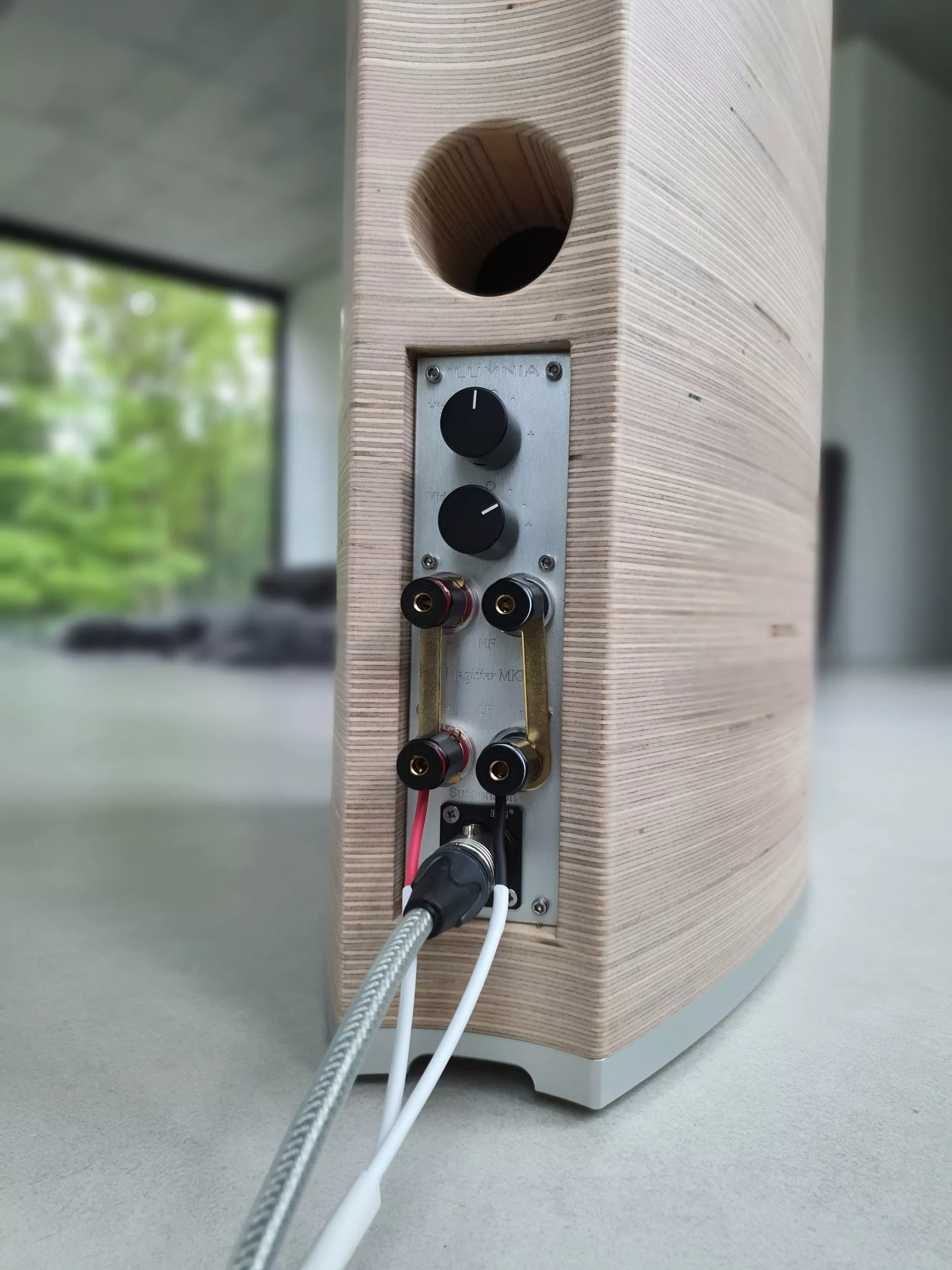What changed in the magister MK2?
The most important changes in the Magister MK2 are the improvements in the unique LEMS driver and in the crossover filter. At Ilumnia we like transparency (and not just in sound) and we want to be clear about actual changes in an MK2 version instead of all kinds of vague stories.
And… the MK2 is backwards compatible with the MK1. That means we don't leave MK1 owners out in the cold. They can upgrade to the MK2.
The MK2 builds on the MK1 from experiences and feedback we have received in the market from customers, dealers and reviewers.
What has remained is our compression-free driver with still the lowest distortion in the market (LEMS) and the very thorough cabinet construction. Not a revolution this time, but evolution.
The changes in our Magister MK2:
We have improved the LEMS driver itself by equipping it with a physical damping that intervenes after the maximum deflection of the cone. It prevents the cone from suddenly hitting the chassis. It couldn't hurt the MK1 (because it was developed for it), but it was sometimes a shock when the aluminum sealing ring of the cone hit the chassis. We have applied a neoprene damping on the MK2 so that the cone is softly but very progressively decelerated. It therefore continues to perform its work without compression as before, but suddenly has a lot of compression, as it were, in the last 3 mm stroke. This improvement does not affect the sound performance of the Magister MK2 vs MK1 in any way. It was a lot of work because we had to completely adjust the pole (the core of the driver).
We immediately took advantage of that adjustment to give the driver a larger stroke (+2mm) for more power. That also has no effect on the sound, but you can now play louder with it.
The exchange filter has been improved in several areas. First, we increased the crossover frequency from the mid-bass unit to the tweeter to 9.5 kHz. That has 2 advantages. All fundamentals and most of the harmonic overtones are now reproduced by one and the same unit. You can therefore almost speak of a full-range with the associated advantages, being an absolute phase purity and the behavior of a point source. That was already very good in the MK1 (switching frequency at 7 kHz and a tweeter that is also mechanically in phase), but that feature has now been improved even further. In addition, this higher crossover frequency ensures an even more spacious image due to the omni arrangement of the LEMS driver.
The disadvantage of "more" omni is often that more energy is reflected by the room, so the MK2 has become (even) more sensitive to the acoustics of a room. We have also taken that into account. The MK2 features an adjustable (analogue of course) frequency response. An often heard criticism of omni is that the room often gets away with the speaker (or vice versa). The result is then too much energy in the mids and highs - as a result of reflection - in a room with little damping or too little energy in a heavily damped room. Indeed, you cannot develop an omni in an anechoic space. You have to develop this with a variety of representative listening rooms. And in the end you have to make a choice which sound tuning you are going to give it. By then playing with the low energy you can balance the the mid-highs a bit, but often not completely. An omni is more sensitive in this respect than a directional speaker. So we worked on the new filter for a very long time.

So herein lies the key to the solution. On the back of the MK2 there are 2 rotary knobs with which you can move the entire "presence" region (approximately from 200 Hz - 20 kHz) completely up or down. Not just one specific frequency range, but the entire curve. This allows you to adapt the Omni to the room in which it is located. Button 1 controls the LEMS unit, button 2 the tweeter.
The filter is designed in such a way that they complement each other seamlessly so that you get a nice flat response.
So you can raise or lower the energy or sound level of this presence region in steps of 1.5 dB. The intention is to adapt the speaker to the room, but you can of course also fill in your personal taste with it.
The ability to adjust the mids and highs in this way in combination with the 8 possible combinations for the lows (hence the 3 bass ports) make it much easier to integrate the MK2 into almost any listening room. We would like to point out that opening the 3 ports at the same time is not the intention, but that is all described in detail in the manual. But of course optimal room tuning can also be carried out by the Dutch representative.
And finally, a final improvement to the filter is a small bump at 1.8 kHz that has been worked out and more body has been added in the mid-low.
Although the MK2 filter has been improved and can also be personalized in relation to the space, we have remained true to our basic philosophy: keep it simple.
The filter has been designed smarter so that the simple topology of the MK1 (as few components as possible in the signal path) could be maintained.